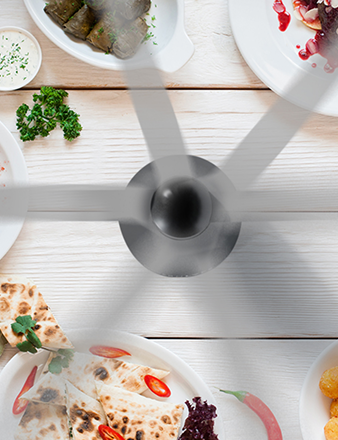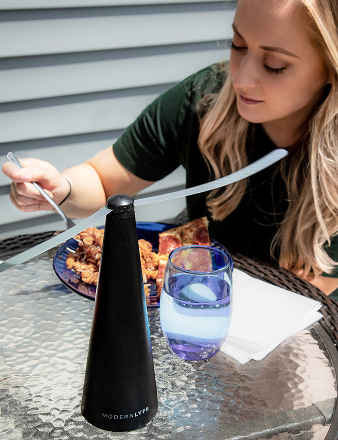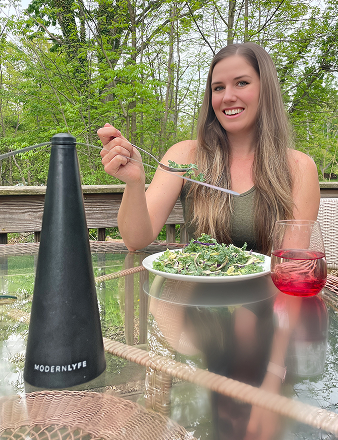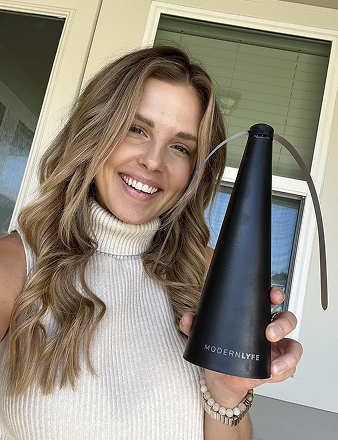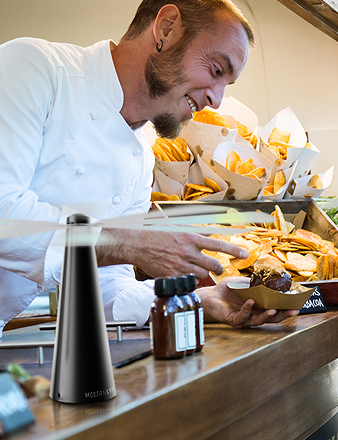When you spot tiny pests buzzing around your kitchen, your first move is critical. An effective plan for fruit flies removal is a simple three-step attack: confirm the pest, trap the adults, and clean their breeding grounds. Acting fast can slash their numbers in hours.
Your Immediate Action Plan For Fruit Fly Removal
Seeing a cloud of tiny insects over your fruit bowl is frustrating, but a methodical approach is your best bet. Before setting traps, make sure you're dealing with fruit flies, not other pests like fungus gnats or drain flies.
Fruit flies are typically tan or light brown with distinct red eyes.
Once you've identified them, the mission is immediate control. We're not talking long-term prevention yet—this is about knocking down the current population now. The most effective first move is setting traps to catch adult flies and stop their breeding cycle.
This guide breaks down that initial response into three clear stages.
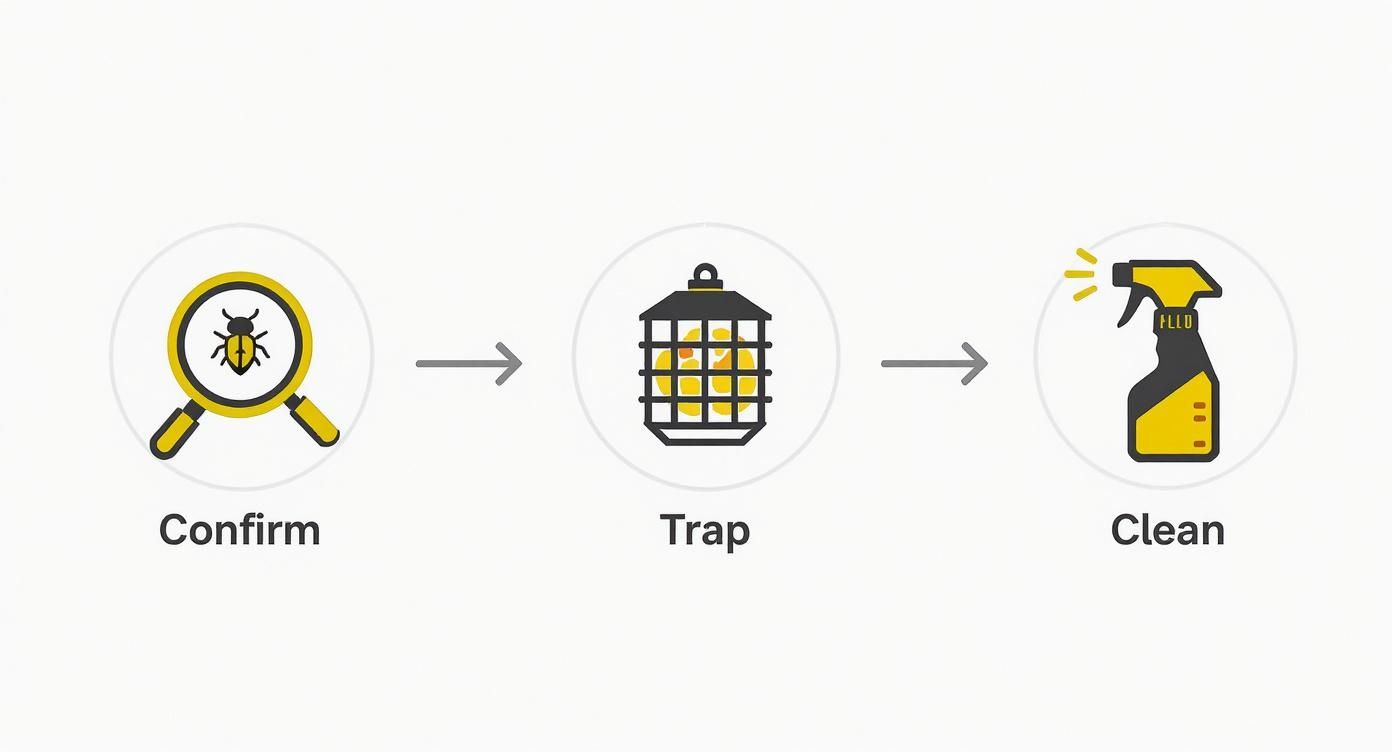
As you can see, trapping existing flies and cleaning their food sources should be done simultaneously for the fastest results.
Choosing Your First Trap
You don't need fancy equipment. An effective trap can be made in minutes with items from your pantry. The secret is an attractant that mimics fermenting fruit, which is why apple cider vinegar is the go-to bait—its pungent, sweet scent is irresistible to them.
Pro Tip: The best traps don't just lure flies in; they make sure they can't get out. Add a single drop of dish soap to your vinegar trap. This breaks the liquid's surface tension, so when flies land to drink, they sink and drown.
To help you choose a DIY trap, here’s a quick comparison of the most popular options. For more detailed instructions, check out our guide on how to build a powerful fly trap with bait.
Effective DIY Fruit Fly Trap Comparison
Here's a quick look at the most reliable homemade traps for a fast solution.
| Trap Type | Key Ingredients | Effectiveness Rating | Setup Time |
|---|---|---|---|
| Vinegar Jar Trap | Apple cider vinegar, dish soap, plastic wrap | ★★★★★ | 2 minutes |
| Wine Bottle Trap | Leftover red or white wine, paper funnel | ★★★★☆ | 3 minutes |
| Rotten Fruit Trap | Overripe fruit (banana, peach), paper funnel | ★★★★☆ | 3 minutes |
| Sugar & Soap Bowl | Water, sugar, dish soap | ★★★☆☆ | 1 minute |
The classic vinegar jar trap is top-rated for a reason—it's fast, cheap, and incredibly effective at capturing adult flies immediately.
Finding and Eliminating Hidden Breeding Grounds
Setting traps is a great first step, but it's a temporary fix. To get rid of fruit flies for good, you have to find where they're laying eggs and cut them off at the source.
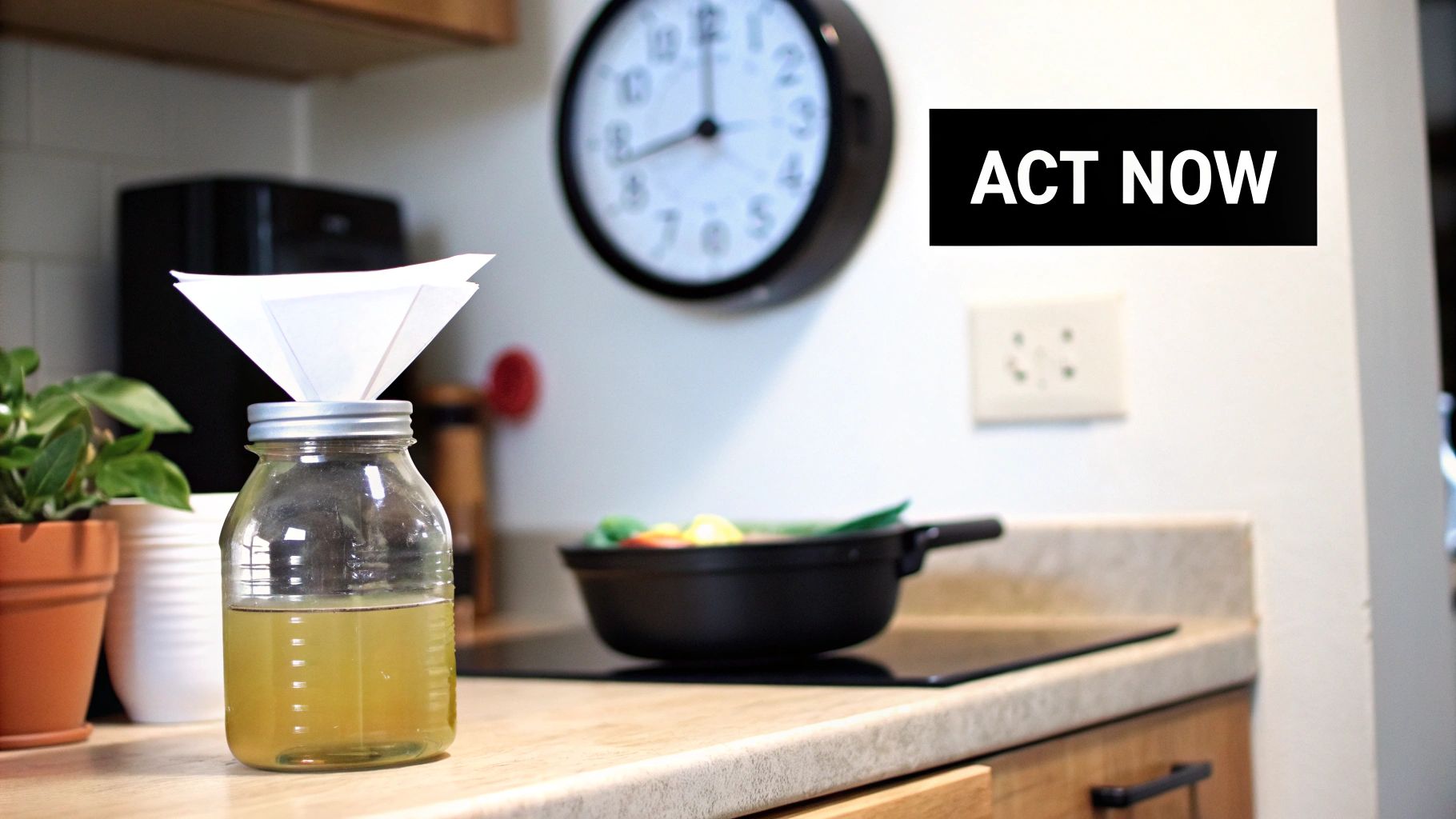
Most people blame the fruit bowl on the counter, but the problem is rarely that simple.
Fruit flies are resourceful. They only need a thin, moist film of fermenting organic matter to lay hundreds of eggs. With a life cycle that can produce a new generation in just over a week, a small problem can quickly become an infestation. This means the real hotspots are often places you overlook in your daily cleaning.
Conducting a Kitchen Source Audit
To get ahead of the problem, conduct a "source audit" of your kitchen, bar, or service area. This is a search-and-destroy mission for every potential breeding site. Think like a detective: your main clues are moisture and decaying organic gunk.
Start with the obvious culprits and work your way to less common spots. A single missed area is all it takes to keep the cycle going.
Here are the prime locations to inspect:
- Drains and Disposals: The slimy biofilm inside sink drains, garbage disposals, and floor drains is a five-star hotel for fruit flies.
- Underneath Appliances: Dark, damp spaces under refrigerators, dishwashers, and ice machines are notorious for catching spills.
- Trash and Recycling Bins: Sticky residue from soda cans, beer bottles, and juice cartons is a feast, even in an "empty" bin.
- Damp Cleaning Tools: Sour sponges, forgotten dish rags, and mops that haven't dried properly can quickly become nurseries.
I've seen countless businesses focus only on solid food waste. But fruit flies are just as happy with the sugary residue from a spilled soda, the dregs of a wine bottle, or the gunk inside a soda fountain drain line.
By methodically sanitizing these areas, you remove everything they need to reproduce. This source control is the single most important part of getting rid of them permanently.
The Bar and Restaurant Hotspot Checklist
Commercial settings like bars and restaurants are a tougher battleground due to the sheer volume of attractants. A nightly deep clean of certain areas isn't just a good idea—it's non-negotiable.
Here’s a targeted checklist for high-traffic food service areas:
- Beverage Stations: Clean soda gun nozzles and their holsters. Flush and scrub drip tray drain lines daily.
- Bar Mats: Remove and wash every rubber bar mat with hot, soapy water every night. Let them dry completely before the next shift.
- Garnish Trays: Store all fruit garnishes—lemons, limes, cherries—in sealed, refrigerated containers overnight. Toss whatever isn't used.
- Spill Wells: Empty and sanitize speed rails and ice wells, wiping them completely dry to prevent moisture buildup.
These aren't just cleaning tasks; they're strategic moves to break the fruit fly life cycle. Remember, a tiny amount of spilled syrup or one forgotten olive can sustain an entire population.
Deep Cleaning for Lasting Results
Sometimes, you can do everything right and still have a problem. Stubborn breeding grounds can persist in hard-to-reach places like cracked grout, behind baseboards, or deep within plumbing. This is especially true in older buildings or busy commercial kitchens.
When a stubborn infestation won't quit, it's time for a more intensive approach. A professional deep cleaning service can be a game-changer, sanitizing spots you might have missed. They have the equipment and experience to hit hidden breeding grounds hard.
Ultimately, eliminating breeding grounds is a game of persistence. By combining a thorough initial audit with consistent daily sanitation, you transform your space from a fly haven into an environment where they can't survive.
Choosing the Right Traps: DIY vs. Commercial
Once you've attacked their breeding grounds, shift your focus to the adult flies still buzzing around. Sanitizing stops the next generation, but trapping gives you immediate relief from the current nuisance. This is about capturing stragglers and ending the annoyance for good.

You have two main paths: building your own traps or buying commercial ones. Neither is universally "better"—the right choice depends on your situation, whether it's a minor issue at home or a persistent problem at a busy bar.
Perfecting the Homemade Fruit Fly Trap
The classic apple cider vinegar (ACV) trap is famous for a reason: it works. With a few simple tweaks, you can make it even more potent. The goal is to create an irresistible lure that flies can enter but never leave.
The standard recipe is simple: pour about an inch of ACV into a jar, add a drop of dish soap, and cover the top with plastic wrap secured by a rubber band. Poke a few tiny holes in the plastic, and you're set. The vinegar’s scent mimics fermenting fruit, and the soap breaks the liquid's surface tension, causing flies to sink immediately.
Ready to level up your DIY game? Try these variations:
- Add Bait: Drop a small piece of overripe banana or peach into the vinegar. The combined scent is a powerful attractant that draws in more flies, faster.
- Warm It Up: Gently warm the vinegar for about 10 seconds in the microwave. This amplifies the aroma, making your trap more noticeable.
- Use Red Wine: An open bottle of red wine can work just as well as, if not better than, vinegar. Its fermented grape scent is a premium lure.
A common mistake is making the holes in the plastic wrap too large. A fruit fly is tiny. The holes should be just big enough for them to squeeze through—think the size of a toothpick tip. Anything larger, and they might find their way back out.
For a deeper dive into crafting the perfect bait and trap design, our guide on the ideal fly trap for fruit flies offers more detailed recipes and strategies.
When to Buy Commercial Traps
While DIY traps are cost-effective and efficient, commercial products offer convenience, longevity, and a more discreet appearance. They are especially useful in businesses where aesthetics matter or when you need a reliable set-and-forget solution.
You’ll find three main types of commercial traps, each with its own pros and cons.
Discreet Plug-In and Light Traps
These devices use a combination of a gentle UV light and a hidden sticky glue board. The light attracts flies, and the board traps them silently and out of sight. They’re an excellent choice for customer-facing areas like dining rooms or hotel lobbies because they are subtle and odor-free.
The catch? Placement is everything. A UV trap won't do much good in a brightly lit room. They work best in dimmer areas or overnight when other lights are off.
Sticky Traps
This is the simplest commercial option. They come as yellow sticky paper, window clings, or small stakes for potted plants. They are coated with a powerful, non-toxic adhesive that traps any insect that lands on them.
Sticky traps are fantastic for monitoring an infestation—the number of flies caught gives you a clear visual report on the problem's scale. Their main downside is aesthetic; a strip covered in dead flies isn't ideal for customer-facing areas. Use them in back-of-house areas, under sinks, or behind appliances.
Pre-Filled Liquid Traps
Think of these as the commercial version of your DIY vinegar trap, often shaped like a small apple. They come with a pre-mixed, proprietary liquid lure that is often more potent and longer-lasting than homemade solutions.
Their primary advantage is convenience. You just open the container and place it where needed—no mixing, no mess. This makes them a solid middle ground, offering better performance than a basic DIY trap with almost zero effort. They're ideal for busy homeowners or small business owners who need a quick, reliable fix.
| Trap Type | Best For | Pros | Cons |
|---|---|---|---|
| DIY Vinegar Trap | Quick, low-cost home use | Extremely cheap, effective, uses common ingredients | Needs frequent refreshing, can look messy |
| UV Light Traps | Customer-facing areas, overnight use | Discreet, silent, odor-free, effective in low light | Higher initial cost, requires electricity, less effective in bright areas |
| Sticky Traps | Monitoring, back-of-house areas | Inexpensive, great for gauging infestation levels | Visually unappealing when full, can catch non-target insects |
| Pre-Filled Liquid Traps | Convenient set-and-forget solution | Easy to use, potent lure, long-lasting | More expensive than DIY, plastic waste |
The most successful strategy often involves a combination of methods. Placing a discreet UV trap by the bar, a sticky trap under the prep sink, and a few powerful DIY traps in the kitchen creates a multi-layered defense that captures flies wherever they appear.
Advanced Strategies for Businesses and High-Traffic Areas
If you run a food and beverage business—a restaurant, bar, or café—a fruit fly problem is more than an annoyance. It's a direct threat to your reputation and bottom line. Standard home remedies won't cut it when you're dealing with constant traffic, open doors, and countless attractants.
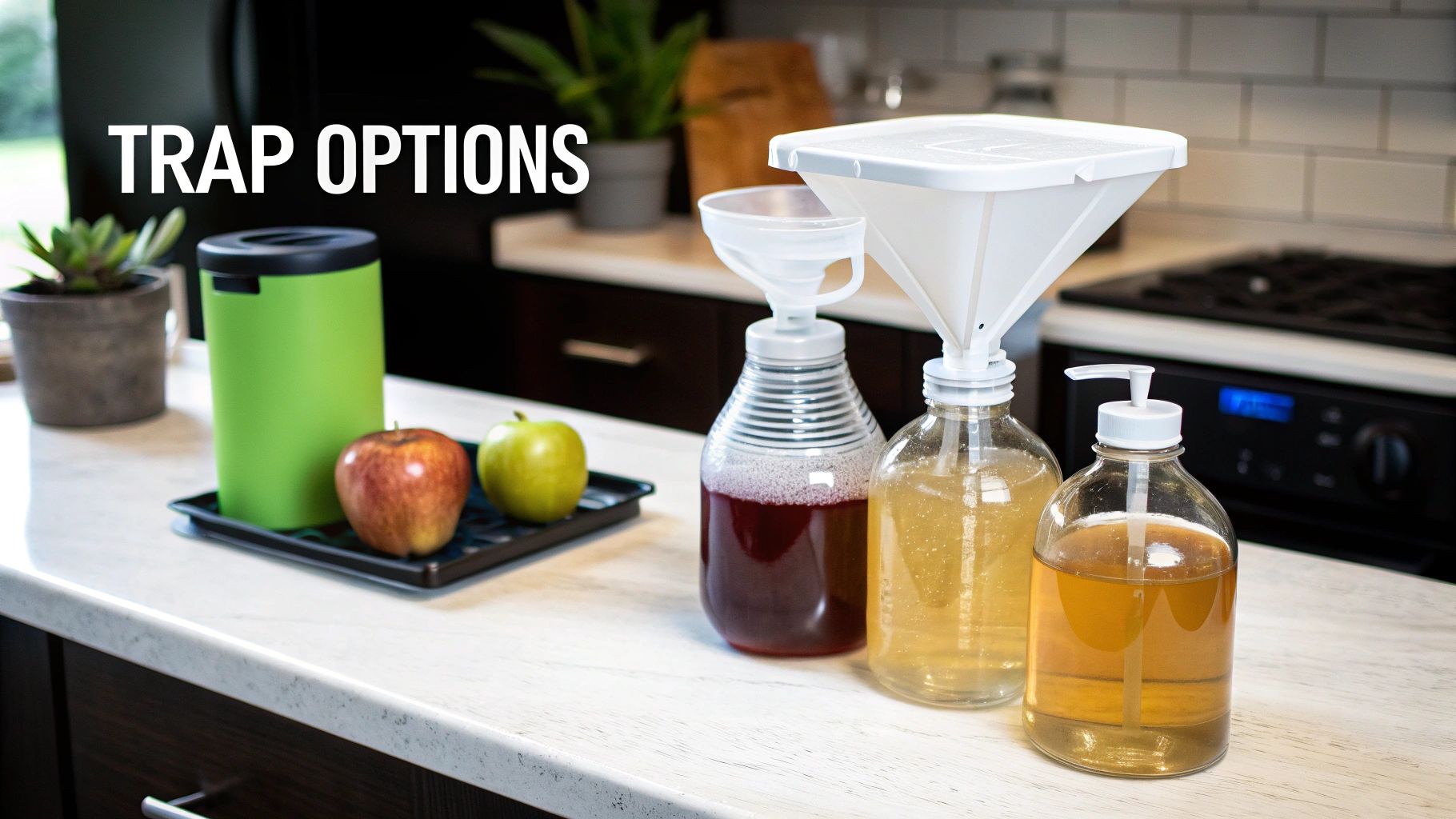
In a commercial setting, you need a multi-layered defense. Getting rid of fruit flies for good means shifting from trapping to aggressively preventing them from ever becoming a problem.
Fortifying Your Physical Defenses
Your first line of defense is physically blocking pests from getting inside. Fruit flies can slip through the smallest openings, so a thorough inspection of your building's exterior is the place to start.
An air curtain, or fly fan, is a surprisingly powerful tool for high-traffic doorways. These devices create a strong, invisible barrier of air that flying insects can't penetrate. They're incredibly effective for main entrances and kitchen delivery doors without getting in the way of staff or customers.
Beyond the front door, reinforce your building's weak spots:
- Mesh Screens: Ensure every window, vent, and door has a fine-mesh screen in perfect condition. A tiny tear is an open invitation.
- Door Sweeps: Install tight-fitting sweeps on the bottom of all exterior doors to seal the gap at the threshold.
- Seal Cracks: Regularly inspect and seal any cracks or gaps around pipes, utility lines, and in the foundation.
Implementing Rigorous Nightly Protocols
In a commercial kitchen or bar, "clean" means leaving nothing behind for pests to eat or breed in. Your nightly cleaning protocol is the backbone of any successful fruit fly management plan.
This is about more than just wiping counters. Your team needs to be trained to hit the specific hotspots where fruit flies thrive.
A common mistake is focusing only on visible food crumbs. In my experience, the real culprits are the hidden, sticky films of sugary liquid—the gunk in the drain of a soda fountain, the residue under a bar mat, or the buildup in a beer tap holster. These are the breeding grounds that keep an infestation going.
Your end-of-day checklist must include flushing all drain lines with hot water, followed by a bio-enzymatic cleaner. These cleaners digest the organic sludge that regular soap can't touch. Every bar mat, garnish tray, and beverage dispenser nozzle must be meticulously cleaned and dried every single night. Smart waste management is also key; learning effective strategies for reducing food waste in restaurants can dramatically reduce attractants.
Staff Training and Large-Scale Management
Your employees are your most valuable asset in the fight against fruit flies. Proper training turns your entire team into a vigilant monitoring system. Empower them to spot and clean spills immediately, identify overripe produce, and understand the "why" behind your strict sanitation rules.
For large-scale or deeply entrenched issues, you might need advanced pest management techniques. The Sterile Insect Technique (SIT), for example, is a powerful, eco-friendly solution for area-wide eradication. This method involves releasing sterilized male insects to mate with wild females, causing the population to collapse.
While SIT is for large-scale agricultural problems, the core principle of integrated pest management (IPM) is perfect for your business. It’s a sustainable approach combining sanitation, exclusion, and targeted control. By building a robust defense system, you protect your inventory, your customers, and your hard-earned reputation.
Creating a Permanently Fly-Free Zone
Getting rid of today's fruit flies is a win, but the real goal is to make sure they never return. This means shifting from reacting to actively preventing. It's about building simple, sustainable habits that make your space uninhabitable for fruit flies.
True prevention isn't about one massive deep clean. It's the small, consistent actions you take daily. By making these practices routine, you remove the two things fruit flies need to survive: food and moisture.
Build Your Daily Sanitation Routine
Your most powerful tool against fruit flies is a solid cleaning schedule. A few minutes of focused effort each day beats a huge cleanup once a week. The goal is simple: leave nothing for pests overnight.
This daily reset needs to become second nature. It’s not just about being tidy—it’s about methodically eliminating every potential attractant.
Here are the non-negotiable daily habits:
- Wipe Down All Surfaces: Use a disinfectant or soapy water on all food prep areas, zeroing in on sticky spots from juice, sauces, or dressings.
- Take Out the Trash: Every single night. No exceptions, especially if it contains food scraps. A trash can with a tight lid helps, but don't let old food sit inside overnight.
- Rinse Your Recyclables: Give bottles, cans, and jars a quick rinse before tossing them in the bin. That tiny bit of leftover wine or soda is a feast for a fruit fly.
- Deal With the Dishes: Leaving dirty dishes in the sink is a welcome mat for pests. If you can't wash them right away, at least rinse them thoroughly.
Master Proactive Food Storage
Your kitchen counter is not a long-term storage unit. A fruit bowl might look nice, but to a pest, it's an all-you-can-eat buffet. How you store food is one of the easiest ways to stop an infestation before it starts.
As fruit ripens, it ferments, releasing the exact scent that draws fruit flies. Once they arrive, they can lay hundreds of eggs on your produce.
Key Takeaway: The refrigerator is your best friend. Storing ripe or cut produce in the fridge slows fermentation and keeps it safe from pests.
Inspect fruits and vegetables as soon as you bring them home. Washing and drying produce can remove eggs or larvae that hitched a ride from the grocery store. For items that stay at room temperature, like tomatoes or bananas, check them daily and use or refrigerate them the moment they're perfectly ripe.
The Importance of Constant Vigilance
Even with the best habits, a few fruit flies might slip through. The key is to catch the problem when it’s one or two flies, not a swarm. This means being vigilant and ready to act fast.
A major outbreak can have huge consequences. The 2023-2024 fruit fly outbreak became a massive agricultural crisis, described as the worst in 70 years. The situation required $103.5 million in federal funding to manage, with authorities setting up over 160,000 traps to track the spread. You can learn more about the impact of this major fruit fly outbreak and see how serious it became.
While a home infestation won't cause a national crisis, it’s a powerful reminder of how quickly these pests multiply. Keep a simple vinegar trap in a discreet corner of your kitchen as a permanent monitor. If you start catching a few flies, you know it's time to double-check your cleaning and look for a hidden source, like a strawberry that rolled under the fridge. This early warning system lets you solve the problem before it becomes a major headache.
Answering Your Lingering Fruit Fly Questions
Even after cleaning up and setting traps, you might still have questions. Let's tackle some of the most common ones about these persistent pests.
Why Did Fruit Flies Suddenly Show Up Out of Nowhere?
It feels like they just materialize, but fruit flies are masters of infiltration. They are usually brought in, not flown in from outside. The most common culprit is your grocery haul—they often arrive as tiny, invisible eggs on the surface of fruits and vegetables.
All it takes is one female, which can lay up to 500 eggs. Once a banana on your counter gets too ripe, it starts to ferment, and that's the dinner bell. Those eggs hatch, and in as little as a week, you've gone from zero to a swarm.
How Long Does It Really Take to Get Rid of Them?
This depends entirely on how aggressively you eliminate their breeding source. If you only set a trap but ignore a rotting potato in your pantry, you'll be fighting this battle for weeks. You're just catching adults while a new army hatches.
However, if you're thorough, you can see a massive difference in just 24 to 48 hours. When you remove their food and nursery and trap the existing adults simultaneously, you short-circuit their life cycle. Stick with it, and the problem should be gone within a week.
Does Having Fruit Flies Mean My House is Dirty?
Not at all. While poor sanitation invites them, fruit flies aren't a sign that your home is generally unclean. These pests are resourceful and can start a family in the tiniest bit of organic matter.
A little juice spilled under the fridge, a damp mop head, or residue in a recycling bin is a five-star resort for them. Think of them less as a sign of a dirty house and more as a sign of a very specific, often hidden, source of fermentation.
The biggest mistake people make is focusing only on the fruit bowl. I’ve consulted on spotless kitchens where the source of a relentless fruit fly problem turned out to be a slow-draining sink or a sticky spill behind the coffee maker.
When Is It Time to Call a Pest Control Professional?
Most of the time, you can handle a fruit fly issue on your own. But there are a few scenarios where calling an expert is the right move.
You should consider a professional if:
- The problem won't die. You’ve cleaned everything, set traps, and removed every possible source, yet they keep returning.
- You can't find the source. Professionals know how to find hidden breeding sites in places you'd never think to look, like inside wall voids or deep in plumbing lines.
- You're running a business. For a restaurant or bar, a fly problem is a threat to your reputation. A pro can implement an Integrated Pest Management (IPM) program to get rid of them fast and keep them from coming back.
Sometimes, calling for backup is the quickest way to solve the problem and save your sanity (and your business).
Ready to create a truly fly-free zone for your home or business? The MODERN LYFE Fly Fan offers an elegant and effective solution to keep pests away from your food and guests. Discover how our quiet, battery-operated fans can elevate your dining experience by visiting the MODERN LYFE website.

